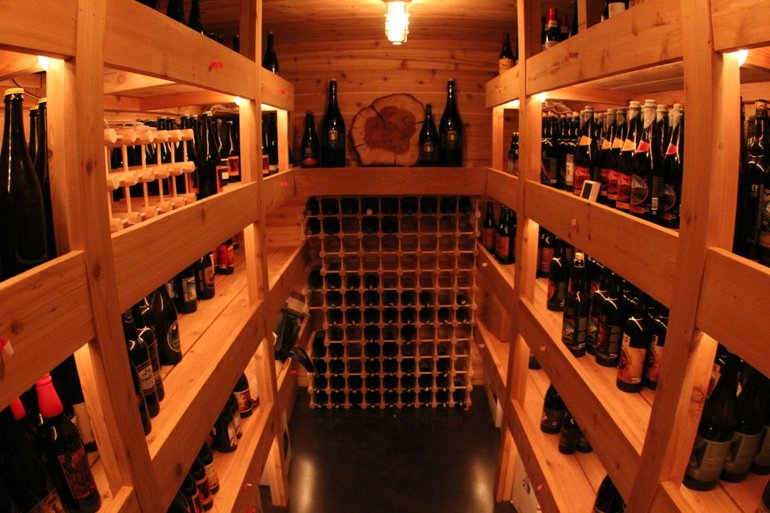Start 14-Day Trial Subscription
*No credit card required

Beer 101: Storage
When you resist the urge to crack open a beer instantaneously, magic can happen. Storing or cellaring beer allows a number of internal and external factors to add character to it, often for the better.
Certain kinds of beer are ideal for cellaring, while others are meant to be enjoyed immediately. There are a few general rules to abide by, and a few exceptions to those rules.
Generally, strong ales above eight percent cellar well, while beers below that mark deteriorate with prolonged age, as do most lagers. Exceptions to this strong ale rule include Belgian-style lambic beers, gueuze, Flemish red ales and sour browns. The oxidation that occurs over time tends to complement these brews that are eight percent in alcohol or less but high in acid.
If fresh fruit and hop flavors are present in the original beer, these characteristics dissipate quickly in beer that’s stored. Malt, on the other hand, can begin to reveal a number of qualities including honey, toffee, wine, raisin and nut after storing.
 Regardless of how long you’re storing beer, it should be kept in a dark, cool (50-65 degrees Fahrenheit), relatively moisture-free environment. Stability is also an important consideration. Environments with regular temperature swings of more than a few degrees can harm your stash. Within reason, it’s worth sacrificing a few degrees of chill for a steady temperature.
Regardless of how long you’re storing beer, it should be kept in a dark, cool (50-65 degrees Fahrenheit), relatively moisture-free environment. Stability is also an important consideration. Environments with regular temperature swings of more than a few degrees can harm your stash. Within reason, it’s worth sacrificing a few degrees of chill for a steady temperature.
Overexposure to light can create compounds in beer that are almost chemically identical to skunk-spray (hence the term “skunked”), and overly cool environments can hamper or halt the aging process entirely, while heat accelerates oxidation, or staleness.
All capped bottles should be stored upright, and though some swear laying bottles on their side helps hydrate the cork, corked bottles should generally be kept upright. The humidity in the bottle’s small airspace will usually serve to moisten the cork, and prolonged contact with certain types of cork can produce off-flavors. Also, many corked bottles contain a layer of yeast which settles at the bottom of the bottle and continues to condition the beer over time. Disturbing this layer can disrupt the maturation of your beer.
Despite this, many revered brewers such as Cantillon stand by sideways-aging. Regardless of the angle, the most important factor is to let the beer remain undisturbed.
Part of the joy of cellaring beer – aside from having a large stockpile of quality suds – is being able to taste how beer changes over time. Serious cellar-keepers will organize and record what they drink, noting changes in taste over time. Variances in hop, malt and yeast from year to year will alter the flavor profile.
Proper labeling and storage will make it easy to dig up the special brew of your choosing, with older bottles stored toward the front and newer bottles towards the back – generally, older bottles should be consumed before newer ones.
If possible, try to keep enough bottles of a brand to sample every few months, so as to better note how the flavor evolves over time.
And if you’ve saved multiple batches of a brew from various years, you can do a vertical tasting. Samples are poured from each into labeled tasting glasses, allowing one to see how the beer has aged, and discuss which year is best.
Flavorful beer is meant to be savored, and keeping a well attended cellar can greatly expand your enjoyment of quality beer. It’s true that you only live once and some might suggest, “Drink it while you still can.” Yet, a well-aged beer can be truly heavenly.



